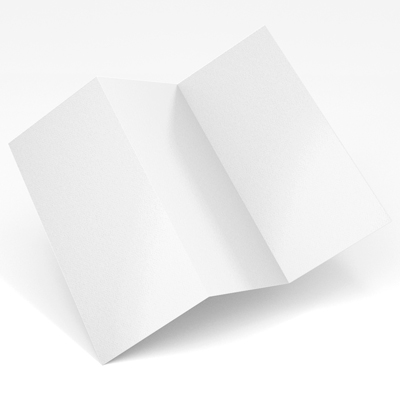We all think we’re familiar with booklets and brochures, but thinking about it, do we really know exactly what differentiates one from the other? We’re going to summarise a few main features that will help distinguish between the two, helping to determine which publication will best suit your needs.
Booklets and brochures are typically both promotional items that are produced in high quantities and distributed to existing or potential customers in order to advertise a product or service. Generally speaking, brochures are made from a single piece of card which is folded to create multiple pages, and booklets are made from a collection of paper, stapled together in the centre and then folded to create a spine. However, these definitions tend to vary from place to place.

Size/Dimensions
Brochures can vary in both size and orientation, and can be folded in various ways to create different sized individual pages. A standard type of brochure is a trifold, which is when the two outer edges of a piece of card are folded into the centre, creating three planes on the front and back. The two outer planes are the same size, and the centre plane is slightly wider. Page numbers are naturally limited with brochures as they are made from only one piece of card or heavy paper.
Typically, a finished booklet is A5 portrait, or sometimes A6. Page numbers are only limited to the number of pages that can physically be bound by staples and therefore a promotional item with a higher page count is more suited to a booklet rather than a brochure. Bear in mind that the page count must also be a multiple of four.

Output/Use
Generally speaking, a brochure is better for attracting new customers as it is less lengthy, more easily digestible and generally more visually appealing in terms of seeing information at a glance. Booklets are great for giving slightly more detail, but remember the difference between these and catalogues, which list products and services. A successful booklet could give an overview of the company, some history or background, and some examples of previous work. A brochure might be a narrowed-down version of this.
Both types of publication can also be used for more personal occasions such as an order of service for a wedding, a programme for a sports or arts event, and virtually anything else you can think of.

Paper Stock/Paper Weight
Finally, it’s worth remembering that different paper weights are available for booklets. The cover is usually a heavier weight to the inside pages to give them protection. One exception is the booklet you traditionally see in a CD case, which is protected by the plastic casing. Lower paper weights of the inside pages will increase the overall number of pages it can hold.
However with brochures, it is advisable to stick to a minimum of 160gsm card, as it will usually need enough weight to stand on its own and be thick enough to be handled without tearing. However there are other options to personalise your brochures such as the variety of finishes; gloss, silk, or uncoated papers depending on the impression you are intending to create.
Case Studies
Liverpool Biennial Programme Booklet

- Multiple pages of the same size bound together
- Staple bound to reduce cost for mass production
- Uncoated paper used for simple text content and some images
- A5 in size for practicality
- A heavier paper for the cover which folds out to reveal a map of the events at the front and a list of participating artists at the back
Florist’s Tri-Fold Brochure

- A single piece of A4 card folded three times (trifold) to create 6 pages
- The size makes it easy to post through letter boxes, put in bags, etc.
- Paper weight around 200gsm so it stands up on its own
- A matt or silk finish to give a high quality sheen and allow the photographs to pop
- Includes succinct information about the business and what it offers, as well as beautiful images making it easy to digest and eye catching



